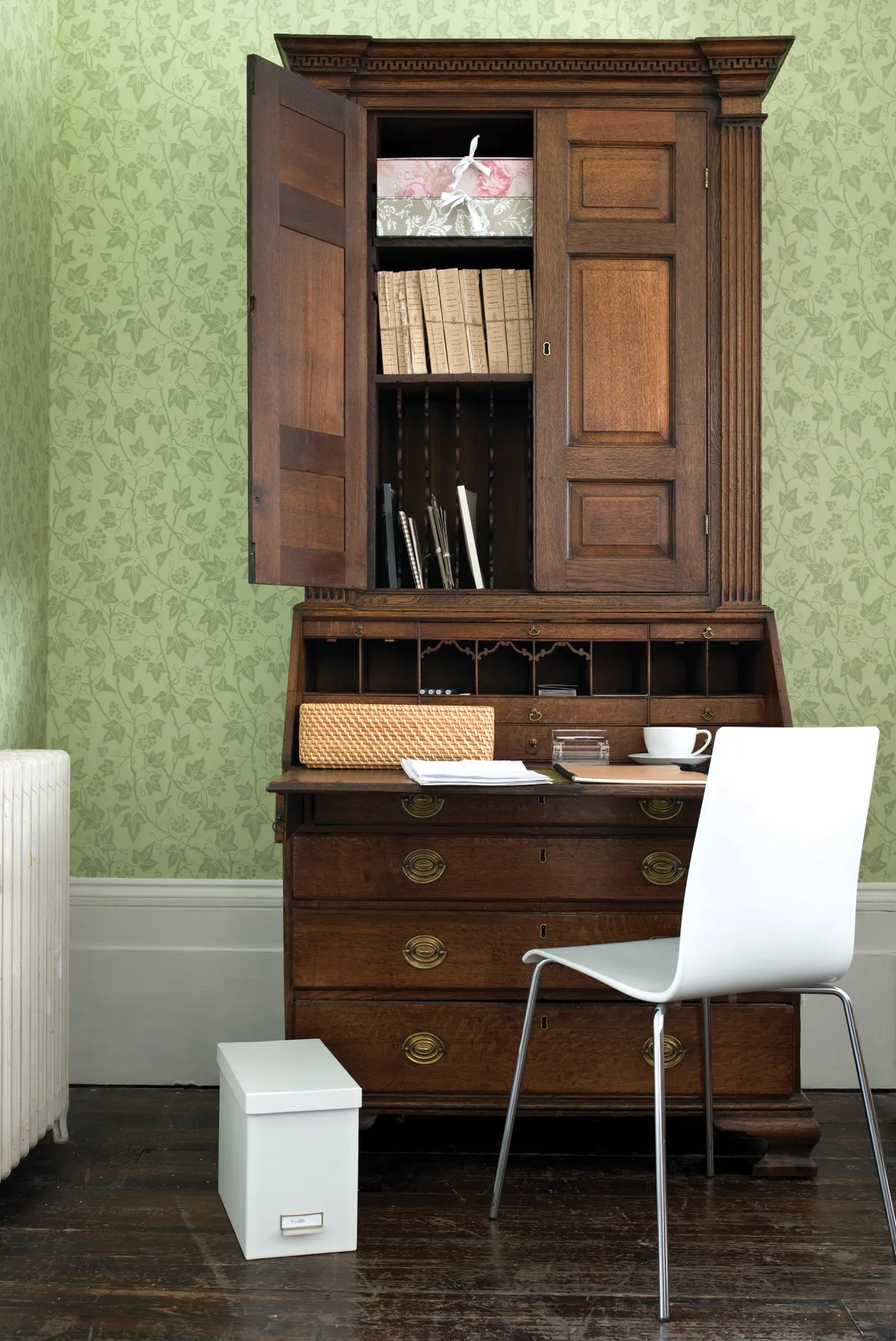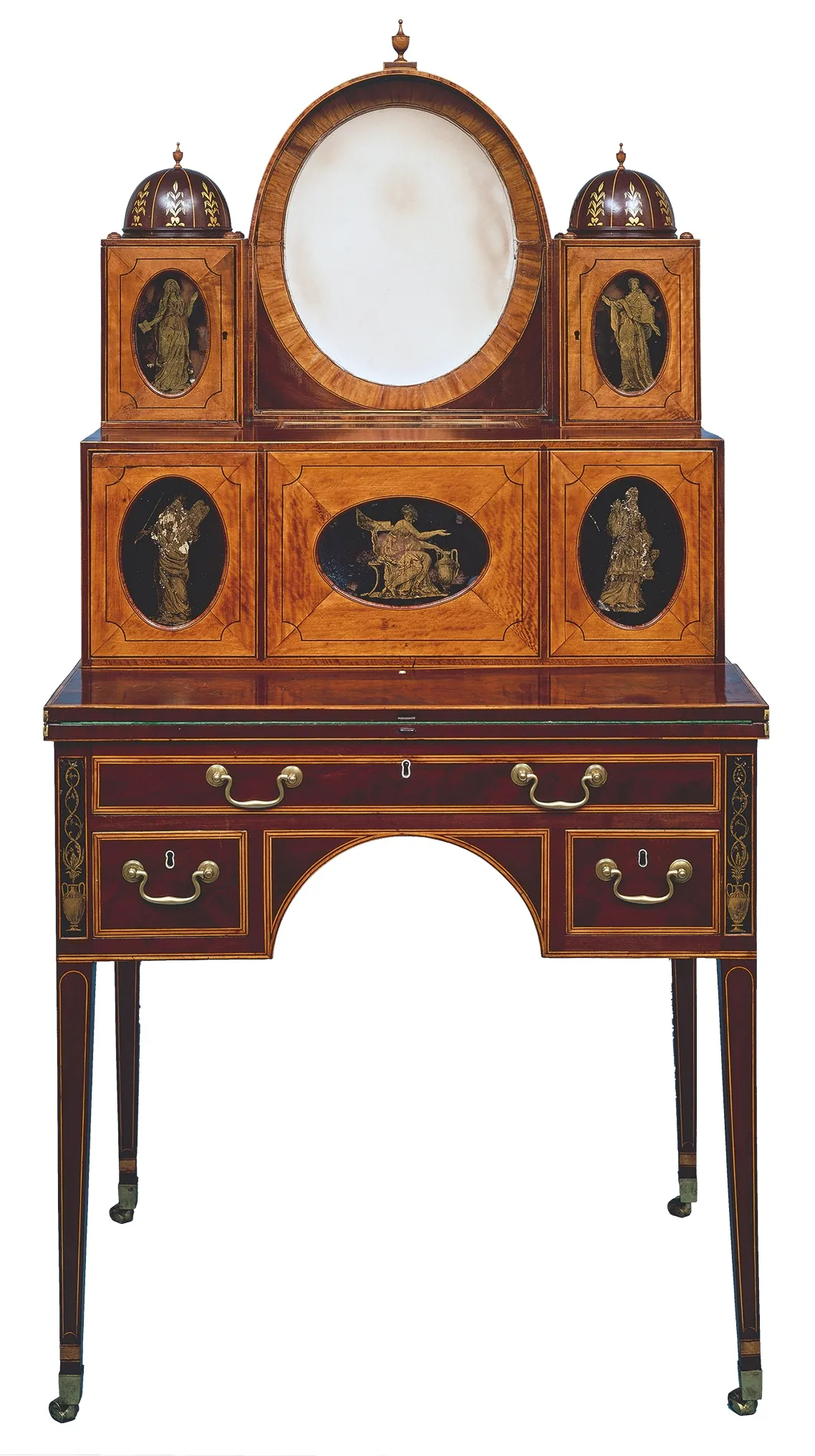Think of Georgian furniture and what do you picture? Chances are, it’s large, sturdy pieces combining simplicity of line with exquisite materials and unparalleled craftsmanship.
The Georgian era spans over 100 years, from the reign of George I (1714-1727) to George IV’s death in 1830. Within this timeframe, styles ranged radically from baroque to rococo, chinoiserie to neoclassical. Early Georgian (1714-1760) pieces can be difficult to distinguish from their Queen Anne (1702-1714) predecessors and, from 1720 or so, there was a preference for the heavyset William Kent style of monumental furnishings. But from the mid-1750s, what we generally recognise as classically Georgian furnishings began to emerge: the elegant, pared-back but not austere forms that have such a modern aesthetic.
The great designers of the period (Thomas Chippendale, brothers Robert and James Adam, George Hepplewhite and Thomas Sheraton), have left us a legacy of peerless furniture, the key examples of which, such as the pieces designed by Thomas Chippendale for Dumfries House, are valued in the millions of pounds. Indeed, an ornate Chippendale parcel-gilt cabinet made for Kenure Park, Co. Dublin, sold for a record hammer price of £2,400,000 at Christie’s in June 2008. The good news for buyers without a stately home budget is that these designs spawned thousands of lookalikes, many of which can be had today for three and four figure sums.
The key design movements of the Georgian era
The Georgian era was a golden age for craftsmanship and design! Here we explore some of the most influential movements and trends of the era.

Is Georgian furniture of a high quality?
Ask any expert to describe Georgian furniture and ‘quality’ is always mentioned. ‘Georgian mahogany means quality and durability,’ agrees Charlie Thomas of Bonhams, Knightsbridge. ‘You can buy a 200-year-old table with the confidence it will probably last another two centuries.’ This legendary robustness is partly down to materials. Walnut was the timber of choice until about 1730, when imported mahogany, superior both in resistance to woodworm and resilience, began to be used for the majority of formal furniture. ‘People with young children in particular find Georgian mahogany is very forgiving. It’s pretty indestructible,’ says Charlie.

Who were the key designers of the Georgian era?
These high-flying designers set the tone for much of the furniture and architecture associated with the Georgian era...
1
Robert Adam
The architect Robert Adam (1728-1792) was famous for his neoclassical take on popular Palladian architecture. With his brother James (1732-1794), he remodelled many a country house and engaged cabinetmaker Thomas Chippendale to produce their furniture designs.

2
Thomas Chippendale
Thomas Chippendale (1718-1779) published his Gentleman and Cabinetmaker’s Director in 1754, including designs in styles from rococo to chinoiserie. The book was a hit with owners of great houses and collectors of furniture all over Europe. The trademark shield-backed chairs and camelback sofas by George Hepplewhite (d1786) became popular in the last quarter of the 18th century.

3
Thomas Sheraton
Thomas Sheraton (1751-1805) began publishing Cabinet-maker and Upholsterer’s Drawing Book and Repository in 1791. It’s thought unlikely he produced his own designs, but hundreds of English cabinetmakers subscribed to Sheraton’s books.

Where to buy antique Georgian furniture
- Anderson & Garland Auctioneers
- Bonhams
- Brownrigg Interiors
- Bushwood Antiques
- Criterion Auctions
- Antiques World
- S&S Timms Antiques
- Georgian Antiques
- Thakeham Furniture
- Hemswell Antique Centres
- Nimbus Antiques
- LAPADA - The Association of Art & Antiques Dealers
- BADA - The British Antiques Dealers' Association